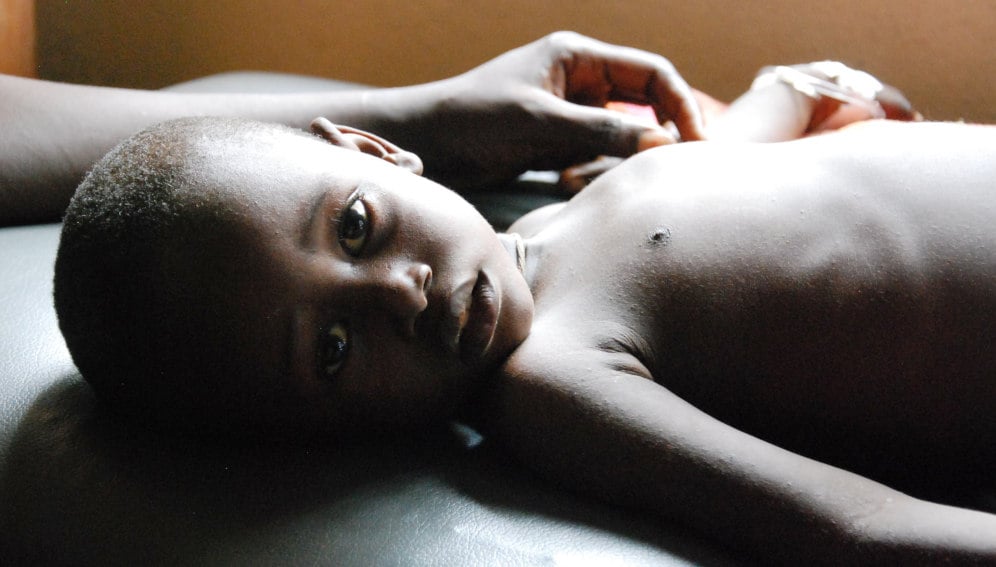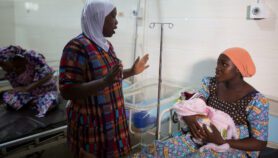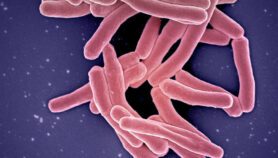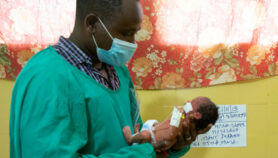14/07/23
Efforts to tackle diseases ‘should shift to teens’

By: Dann Okoth
Send to a friend
The details you provide on this page will not be used to send unsolicited email, and will not be sold to a 3rd party. See privacy policy.
[NAIROBI] Global health researchers and humanitarian organisations have called for public health policy interventions to tackle infectious diseases among older children and adolescents.
Their call comes in the wake of a study published last month in The Lancet that says the infectious disease burden has shifted onto older children and adolescents globally, sparking an emerging health crisis.
There are mounting unmet health needs among older children and adolescents, according to the study by Australia’s Murdoch Children’s Research Institute and the US-based Institute for Health Metrics and Evaluation.
It revealed that 3 million children and adolescents die each year from infectious diseases – the equivalent of one death every ten seconds.
George Nyakora, board member of the Poverty Eradication Network (PEN), which deals with poverty and health issues in Africa, says there’s an urgent need to revise public health policy to address emerging adolescent diseases.
He cited the Kenya primary health care strategic framework, which compels county governments to adopt health strategies targeting youth and adolescents.
“This framework has a particular emphasis on mental [health] among adolescents and youth, especially after the COVID-19 pandemic,” he told SciDev.Net.
Nyakora noted that globally, such policy interventions are required to readjust to the changing global disease landscape, as suggested by the analysis.
Peter Ofware, Kenya country director for the global health and human rights organisation HealthRight International, agrees there needs to be a policy shift in public health to specifically target older children and adolescents.
He cited the example of Kenya, where preventive health policies like immunisation against certain diseases only target babies. He says this needs to be revised with robust policies that target a wider spectrum of the population.
In East Africa, pandemic policies on immunisation have not been revised after the COVID-19 pandemic, to deal with such emerging disease challenges, says Ofware.
“What we have in these countries are government decrees to deal with such emergencies, but they have not been included in long-term government policies,” he told SciDev.Net.
Historically, the infectious disease burden has been on children younger than five years old, with the emphasis on programmes to control early childhood diseases.
Diarrhea, pneumonia and malaria account for two-thirds of infectious disease and death among children and adolescents, while HIV and tuberculosis (TB) are the leading causes among adolescents, according to the new analysis.
Globally, infectious diseases, including pneumonia, diarrhea, malaria and sepsis, remain the leading causes of death for children aged one month to nine years, according to World Health Organization.
“Access to basic life-saving interventions such as adequate nutrition, vaccinations, and treatment for common childhood diseases can save many young lives,” the WHO said in a statement.
HIV/AIDS, malaria
It added that its Child Health and Development Unit (CHD) works with departments and units that are directly responsible for communicable conditions such as dengue, HIV/AIDS, malaria, neglected tropical diseases and TB, to make available guidelines and practical tools that focus on children.
Ofware believes that the findings of the report should compel governments to change policies that inform budget allocation for health in light of the changing disease demographic.
“For instance, if budget allocation towards a disease that is historically known to be prevalent in younger children remains high but the disease is sufficiently contained,” he explained.
“Can such health budget allocation be revised to address emerging health challenges in adolescents, for example? I think this is fundamental, and I think this what the study suggests, in part.”
He also points to the need for policy interventions to enhance health collaboration and partnership between governments, non-governmental organisations, health providers and communities especially in low-income countries, for effective management of infectious diseases.
“Sharing of resources, expertise and best practices can strengthen health systems, enhance disease control efforts, and improve outcomes for children, youth and adolescents,” he added.
In addition to developing robust disease surveillance systems to aid early detection and outbreak response, monitoring disease patterns, tracking cases and implementing rapid diagnostics and treatment are vital for controlling infectious diseases across all the demographics, says Ofware.
The Lancet study sampled 16 groupings of communicable diseases across childhood and adolescence up to the age of 24 in 204 countries and settings between 1990 and 2019.
It found that more than half of the deaths among children and adolescents in low-income countries such as India, Nigeria and Pakistan were as a result of infectious diseases compared to six per cent in high-income countries.
The researchers noted that public health policies around the globe, which emphasised infection control efforts targeting children under five years of age, saw infectious disease burden among this demographic fall to 75 per cent in 2019 from a high of 85 per cent in 1990.
They, however, noted that slower progress was made across the older age groups.
While the analysis supports a continued focus on mortality reduction among children under five years in low-income countries—relating mainly to gastroenteritis, pneumonia and malaria—it called for policy and programming actions to be inclusive of older children and adolescents, who accounted for 650,000 deaths from communicable diseases in 2019.
The study also highlighted the need to shift focus to other diseases, including HIV and TB.
Peter Azzopardi, senior research fellow at the Center for Adolescents Health at the Murdoch Children’s Research Institute, and lead author of the study, said the analysis supports a continued focus on mortality reduction among children under five years in low-income countries—relating mainly to gastroenteritis, pneumonia and malaria.
“However, policy and programing actions need to be inclusive of older children and adolescents, who accounted for 650,000 deaths from communicable diseases in 2019,” he told SciDev.Net.
“Our study also highlights the need to shift our focus to other diseases, including HIV and tuberculosis.”
Jessica Kerr, honorary research fellow at the Center for Adolescents Health and study co-lead, said the COVID-19 pandemic exposed deficiencies and inequalities in health systems, giving an opportunity to rebuild systems and services.
“To do so, we must understand the foundations upon which we are building and the unmet needs within older children and adolescents prior to the pandemic,” she told SciDev.Net.
Joakim Osur, Vice Chancellor Amref International University, said the findings show that some diseases have been neglected.
“I don’t think the burden has shifted, rather the diseases have been neglected for a long time and it is now that we’re seeing the results of that neglect,” Osur said.
He said many youths were into drugs and were grappling with mental health issues.
“Adolescents also grapple with representative health issues like unprotected sex and unwanted pregnancies, but programmes to address these are either weak or non-existent,” he told SciDev.Net.
This piece was produced by SciDev.Net’s Global desk.













